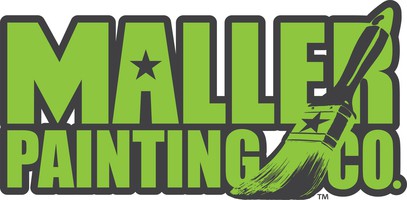
Interior Painting, Tigard, Oregon: How to Prep before Painting the Interior
November 13, 2019
Kitchen Cabinet Painting, Beaverton, OR: Pro Color Tips
November 27, 20193 Simple Ways Remove Ink Stains from Wooden Furniture
Ink spills on wood furniture can be tough to remove, especially if it penetrates the finish. Before you just grab the nearest cleaner, make sure that it is safe for your furniture’s finish.
If you’re having trouble getting ink off your furniture, read on for some tips on how to do so safely, and what to do if everything else doesn’t work.
Method 1: Use dishwashing liquid
Prepare a dishwashing liquid solution
This method is the most effective for treating fresh stains. The dishwashing liquid works, thanks to its fat-eliminating properties. It removes the stain and prevents it from penetrating the wood.
Mix half a teaspoon of dishwashing liquid with five tablespoons of hot water in a small bowl. Stir the solution to foam well.
Test the finish.
Before cleaning the wood, test to see how the wood finish reacts with your cleaning solution.
Dip a cotton swab into the solution and rub a small portion of the wooden item –try it on an inconspicuous part.
If the soap damages the finish, stop. If not, go to the next step.
Swipe the cloth into the prepared foam.
Be careful not to dip the cloth into the liquid, only in the foam.
Gently rub the ink trail with the soapy cloth. Then rinse the surface with a clean damp cloth and dry the wood with a clean cloth.
If the stain is still visible, you can use ultra-fine steel wool soaked in liquid wax.
Gently rub the stained part with the steel wool.
That should remove only a thin layer of the surface. It is important to proceed gently to avoid removing too much wood.
Method 2: Use baking soda
Make a paste of baking soda.
Baking soda is an excellent cleaner because it becomes slightly abrasive when mixed with water.
To prepare the paste, mix baking soda with half a glass of water. Add the baking soda little by little until you get a thick mixture.
Spread the paste on the stained wood and rub it with your fingers to make it penetrate, making sure to cover the ink trail completely.
Let the baking soda do its job. If you rub too hard, you risk damaging the surface of the wood. Wait for ten to fifteen minutes.
Clean the wood.
Use a soft cloth dampened with water to remove the paste. Repeat the process until the ink is completely gone.
If the stain is large, it may be necessary to repeat the process more times.
Once you are satisfied, wipe the surface of the wood with another soft cloth to dry it.
Method 3: Use white spirit
You can find it at any DIY store.
This is a turpentine substitute.
Lightly moisten a cotton ball with white spirit and try it on an inconspicuous part of the furniture. If a little finishing is deposited on the cotton, don’t proceed.
Lightly soak a rag with white spirit and rub the stained wood gently with this cloth.
Clean the wood with a damp cloth.
If the ink trail is still visible, go to the next step.
Use ultra-thin steel wool – rub the stained part with a piece of steel wool moistened with white spirit. Rub very gently, being sure to follow the grain of the wood.
Try to avoid removing more finish than necessary. The less you get, the easier it will be to re-finish later.
Clean the surface.
Use a clean cloth to remove the white spirit and dust created by the steel wool. The ink trail should now be completely gone. If necessary, redo the finish of the wood. Otherwise, protect the finish by applying wax or varnish as soon as possible.
The bottom line
The above three quick tips should help you get rid of the unflattering ink stain that is ruining the aesthetics of your piece of furniture. However, if your pieces of furniture or cabinets are severely stained or the top finish is failing, it might be time to refinish them –and that’s where we come in.
If you need professional help with furniture/cabinet refinishing and getting rid of stains, Maller Painting can help. We have years of kitchen cabinet and residential painting experience serving the areas of Beaverton, Sherwood, and Tigard, Oregon.
To give us a try, book a FREE estimate below or call us on (503) 410-6366 if you have any questions.

Kevin began painting houses with his father’s company, C&K Painting, in 1996. His father taught him how to use a brush, roller, and caulk and clean a brush properly. He then worked for several other paint companies, where he learned how to spray oils, lacquers, and all water-based finishes. In 2012, after 15 years of experience, he decided to get licensed and start the Maller Painting Company. His team has focused on providing the best re-painting services to our residential clients in the Beaverton area.


